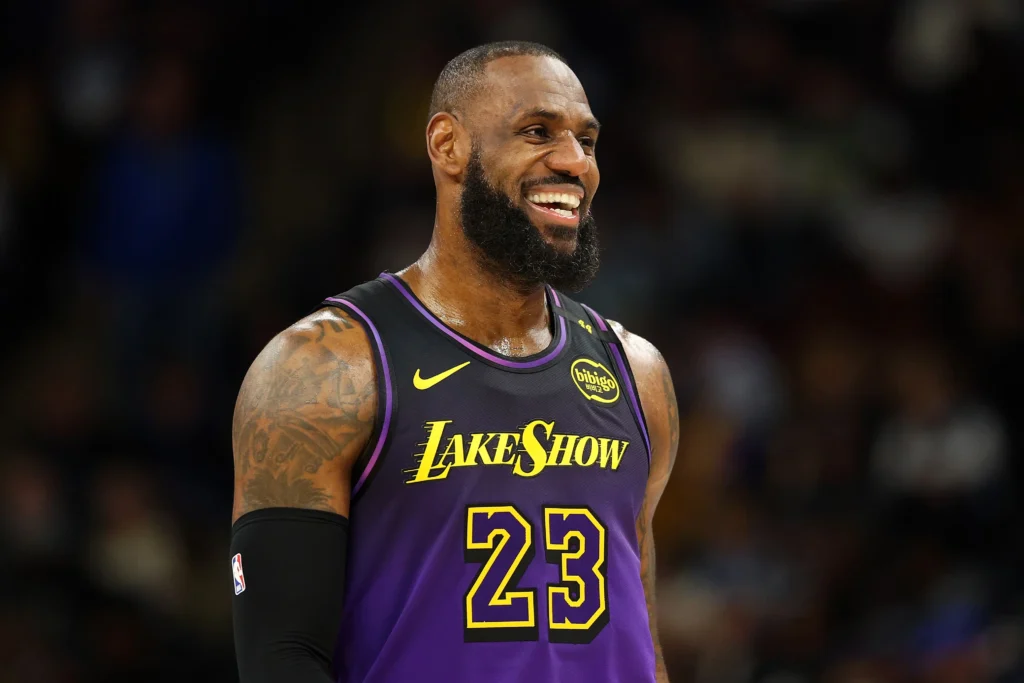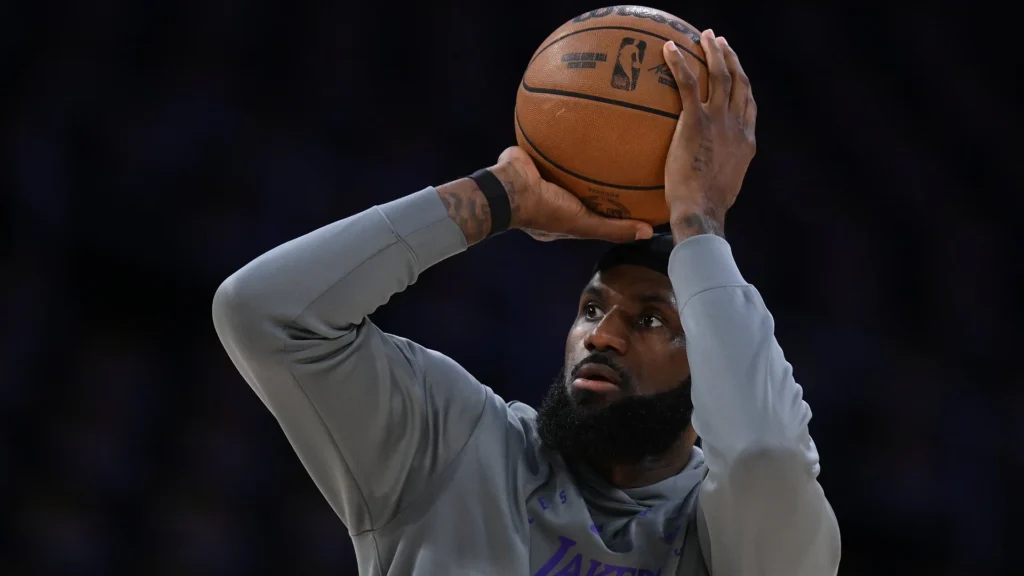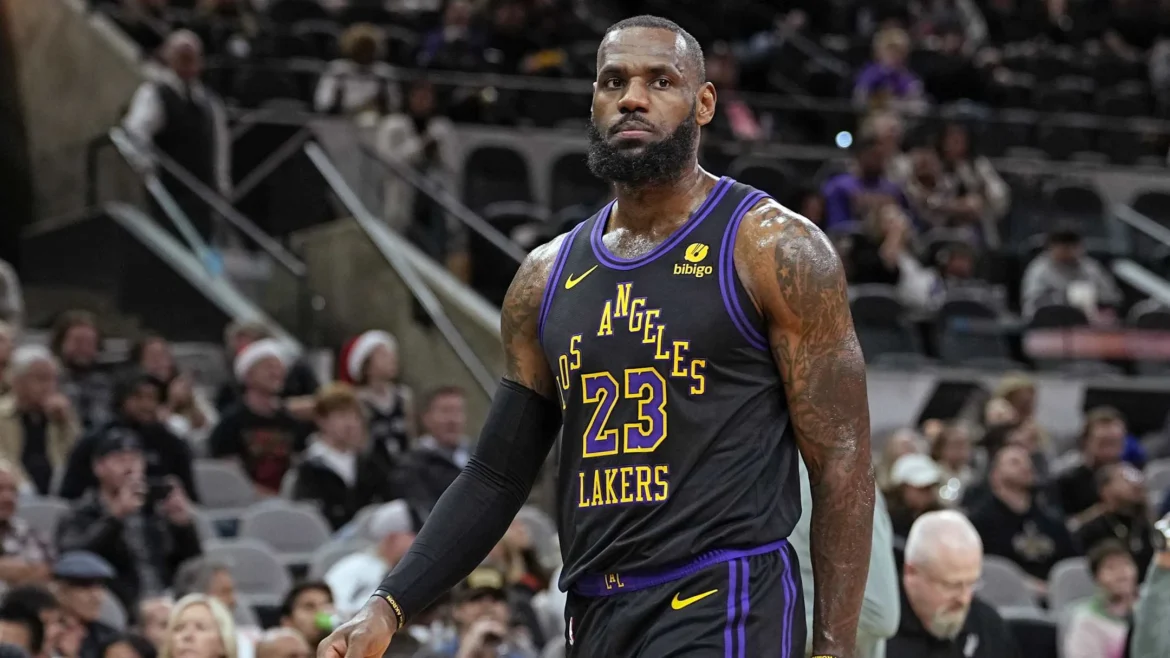Table of Contents
When a former teammate predicts lebron james retirement timeline, the basketball world takes notice—but what can this teach us about planning our own retirement exit strategy? Just as LeBron carefully considers his career longevity, every professional needs a strategic approach to retirement timing that maximizes their financial security and personal fulfillment.
Whether you’re in your 40s like LeBron or approaching traditional retirement age, the principles of strategic retirement planning remain the same: assess your financial readiness, consider your health and energy levels, and create a timeline that gives you the best possible outcome for your golden years.
What LeBron’s Career Longevity Teaches Us About Retirement Planning
LeBron James has defied conventional wisdom about athletic careers, playing at an elite level well into his late 30s. This mirrors what many of today’s workers face—the possibility and often necessity of working longer than previous generations. The key insight from the lebron james retirement timeline discussion isn’t just about when he’ll hang up his jersey, but how he’s strategically planning for life after basketball.

In my years of retirement planning, I’ve noticed that the most successful retirees share LeBron’s approach: they plan ahead, maintain their “health” (financial health in this case), and don’t rush into retirement without proper preparation. Just as LeBron has diversified his income streams with business ventures and investments, smart retirement planning requires multiple income sources.
The Power of Working Past Traditional Retirement Age
Recent studies show that working even two or three years past your planned retirement date can dramatically improve your financial security. This strategy, sometimes called “phased retirement,” allows you to:
- Continue contributing to retirement accounts and receiving employer matches
- Delay Social Security claims for increased monthly benefits
- Let your existing retirement investments grow for a few more years
- Potentially stay on employer health insurance longer
The Social Security Administration confirms that delaying retirement can increase your benefits by up to 8% per year until age 70—a guaranteed return that’s hard to beat in today’s market.
Creating Your Personal Retirement Timeline
Unlike professional athletes who face physical limitations, most of us have more flexibility in our retirement timing. However, this flexibility can be both a blessing and a curse. Without the clear endpoint that athletes face, it’s easy to procrastinate on retirement planning or make emotional decisions based on market conditions or workplace stress.
Here’s what I tell my clients about developing their own retirement timeline: start with your ideal retirement lifestyle and work backward to determine what you need financially. Just as speculation about the lebron james retirement timeline considers his personal goals and family priorities, your retirement plan should reflect your unique circumstances and dreams.
Key Factors to Consider in Your Timeline
Your retirement timeline should account for several critical factors that many people overlook in their initial planning:
- Health considerations: Both your current health status and family health history
- Financial readiness: Whether your savings can sustain your desired lifestyle
- Social Security optimization: The timing of claims can impact lifetime benefits significantly
- Healthcare coverage: Bridging the gap between employer insurance and Medicare eligibility
- Family obligations: Supporting aging parents or helping children with college costs
“The biggest mistake I see people make is setting a retirement date based on emotion rather than financial reality. Your timeline should be driven by your numbers, not your frustrations.”
— Michael Thompson, Certified Financial Planner
Financial Strategies for Extended Career Longevity
Whether you’re planning to work until 62, 67, or even into your 70s like some professionals, your financial strategy needs to support your timeline. Athletes like LeBron invest heavily in their physical conditioning to extend their careers—similarly, you need to invest in your financial conditioning to support a longer working life or a more comfortable retirement.
Consider the case of professionals who, like discussions around the lebron james retirement timeline, face speculation about their “peak performance” years. The key is maximizing your earning and saving potential while you’re at your career peak, regardless of your age.
Maximizing Your Peak Earning Years
Many professionals hit their highest earning potential in their 50s and early 60s. This is when retirement planning can accelerate dramatically. If you’re in this phase, consider these strategies:
- Maximize 401(k) contributions, including catch-up contributions if you’re over 50
- Take advantage of Health Savings Account (HSA) triple tax benefits for retirement healthcare costs
- Consider Roth IRA conversions during lower-income years or market downturns
- Evaluate your investment allocation to balance growth potential with risk management
The IRS contribution limits for 2024 allow workers over 50 to contribute an additional $7,500 to their 401(k) beyond the standard limit—a powerful tool for late-career retirement acceleration.
Learning from Other Athletes’ Retirement Transitions
While we focus on the lebron james retirement timeline, it’s worth examining how other professional athletes have handled their transitions. Many athletes struggle financially after retirement despite earning millions during their careers, often because they didn’t plan adequately or diversify their income sources.

This same principle applies to all of us. Whether you’re a teacher, engineer, or business executive, relying solely on your primary career income without building additional revenue streams or substantial savings can leave you vulnerable in retirement. The athletes who thrive after their playing days are those who treat their sport as one part of a broader financial strategy.
Speaking of athletic retirement planning, you might find it interesting to read about how other professional athletes approach their retirement decisions, such as Chris Paul’s potential retirement planning, which offers additional insights into career transition strategies.
Diversification Beyond Your Primary Career
One lesson from successful athlete transitions is the importance of diversification. Before retirement, consider developing:
- Investment portfolios across different asset classes
- Rental real estate or REITs for income generation
- Part-time consulting or freelance opportunities in your field
- Business ventures or partnerships that can provide passive income
Just as athletes often transition into coaching, broadcasting, or business ownership, your retirement plan should consider how your professional skills might generate income in different ways during your retirement years.
The Psychology of Retirement Timing
One aspect that discussions about any retirement timeline—including speculation about when LeBron will retire—often miss is the psychological component. Retirement represents a fundamental shift in identity and purpose, especially for high achievers who have defined themselves through their careers.
I’ve worked with clients who were financially ready to retire at 55 but couldn’t imagine life without their careers, and others who desperately wanted to retire but hadn’t saved enough. The sweet spot is aligning your financial readiness with your emotional readiness, which requires honest self-reflection about what retirement means to you.
For those interested in how other professionals navigate major career transitions, the story of Dwight Evans’ retirement from his Congress seat provides insights into how public figures approach stepping away from high-profile careers.
Preparing Mentally for Retirement
Start thinking about retirement as a transition to a new phase of life, not an ending. Consider:
- What activities or pursuits will give you purpose and fulfillment?
- How will you maintain social connections outside of work relationships?
- What aspects of work do you enjoy that you might continue in retirement?
- How will you structure your days and weeks without work obligations?
Many successful retirees describe their transition as moving from “work-life balance” to “life-work integration,” where they have more control over how they spend their time while potentially maintaining some professional activities they enjoy.
Healthcare Considerations in Retirement Planning
One factor that significantly impacts retirement timing for many Americans is healthcare coverage. Unlike countries with universal healthcare, U.S. workers often feel tied to their jobs specifically for health insurance benefits, especially if they have chronic conditions or take expensive medications.
This is where the lebron james retirement timeline analogy becomes particularly relevant—professional athletes often have access to excellent healthcare throughout their careers, but they must plan for coverage after they stop playing. Similarly, you need a clear strategy for healthcare costs and coverage throughout your retirement years.
According to Fidelity Investments’ research, the average retired couple may need approximately $300,000 saved specifically for healthcare costs in retirement—a sobering figure that underscores the importance of health-focused financial planning.
Healthcare Planning Strategies
- Maximize Health Savings Account contributions for triple tax advantages
- Research Medicare supplement insurance options well before turning 65
- Consider long-term care insurance, especially if you have family history concerns
- Factor prescription medication costs into your retirement budget
- Explore healthcare-focused retirement communities or locations
Remember that Medicare doesn’t cover everything, and it doesn’t begin until age 65 for most people. If you’re planning to retire before 65, you’ll need a bridge strategy for health insurance coverage.
Lessons from Other Professional Transitions
While we’ve focused primarily on athletic retirement timelines, professionals in other high-intensity careers face similar decisions about when to step back. For example, Jenson Button’s NASCAR retirement demonstrates how professionals can transition between different phases of their careers rather than stopping entirely.

This concept of “career phases” rather than abrupt retirement is becoming increasingly common. You might transition from full-time work to part-time consulting, from corporate employment to entrepreneurship, or from high-stress roles to more fulfilling but perhaps lower-paying positions.
Similarly, Mike Conley’s retirement decision with the Timberwolves illustrates how professional athletes weigh multiple factors—team needs, personal fulfillment, family considerations, and financial security—when making retirement decisions.
Creating Multiple Retirement Scenarios
Instead of fixing on one retirement date, consider developing multiple scenarios:
- Early retirement scenario: What if you could retire at 60? What would you need financially?
- Traditional retirement scenario: Retiring between 65-67 with full Social Security benefits
- Extended career scenario: Working until 70 for maximum financial security
- Phased retirement scenario: Gradually reducing work responsibilities and hours
Having multiple scenarios gives you flexibility to adapt as your circumstances change, much like how professional athletes might adjust their career plans based on performance, injuries, or family considerations.
Frequently Asked Questions
What year will LeBron James retire?
While LeBron James retirement timeline hasn’t announced an official retirement date, various predictions suggest he might retire between 2025-2028, potentially after his son Bronny’s NBA career develops. However, LeBron has consistently stated he wants to play as long as his body allows and he can perform at an elite level.
How long is LeBron out for 2025?
As of current information, LeBron James isn’t scheduled for any extended absence in 2025. Any injury-related absences would depend on his physical condition during the season, but there are no announced long-term plans for time off in 2025.
Is LeBron James retiring in 2025?
LeBron James has not announced plans to retire in 2025. While speculation continues about his retirement timeline, he has indicated he wants to continue playing as long as he can compete at the highest level and potentially play alongside his son Bronny.
Is 2026 LeBron’s last season?
There’s no official confirmation that 2026 will be LeBron’s final season. His retirement timing will likely depend on his physical condition, team success, family considerations, and his son’s NBA career progression rather than a predetermined date.
Can you play in the NBA after 40?
Yes, several NBA players have competed after age 40, including Kareem Abdul-Jabbar, Karl Malone, and more recently, Vince Carter who played until age 43. However, it requires exceptional physical conditioning, reduced minutes, and often accepting a different role on the team.
Who’s better, LeBron or Kobe?
This is one of basketball’s most debated topics with valid arguments on both sides. LeBron has superior career statistics and longevity, while Kobe had five championships and legendary clutch performance. Most analysts consider both among the top 5-10 players ever, with personal preference often determining individual rankings.
Will LeBron play in 2028?
Playing in 2028 would make LeBron 43-44 years old, which would be unprecedented for a player at his usage level. While his longevity has been remarkable, playing until 2028 would require continued elite physical condition and likely a significantly reduced role.
How much does McDonald’s pay LeBron?
LeBron James doesn’t currently have a McDonald’s endorsement deal. He previously had a relationship with McDonald’s early in his career but has since focused on other business ventures and endorsements with companies like Nike, AT&T, and his own business investments.
How much longer can LeBron play?
LeBron’s continued playing time will depend on his physical health, performance level, and personal motivation. Given his exceptional conditioning and relatively low injury history, he could potentially play 2-4 more seasons, though likely with reduced minutes and a more selective schedule as he ages.
Taking Action on Your Retirement Timeline
While we may never know the exact lebron james retirement timeline until he announces it himself, we can learn valuable lessons from how professional athletes approach career longevity and transition planning. The key insight is that successful retirement—whether from basketball or any career—requires strategic planning, financial preparation, and emotional readiness.
Your retirement timeline doesn’t have to be set in stone, but it should be based on realistic financial projections and personal goals rather than arbitrary dates or external pressures. Start by calculating what you need for your desired retirement lifestyle, then work backward to determine when that goal becomes achievable.
Remember that retirement planning isn’t just about accumulating money—it’s about creating a transition that allows you to maintain your sense of purpose and fulfillment while achieving financial security. Whether you retire at 62 or work until 70, the most important step is starting the planning process now.
Disclaimer: This article provides educational information about retirement planning strategies. It is not personalized financial advice. Your situation is unique—please consult with qualified financial professionals before making significant retirement decisions.

